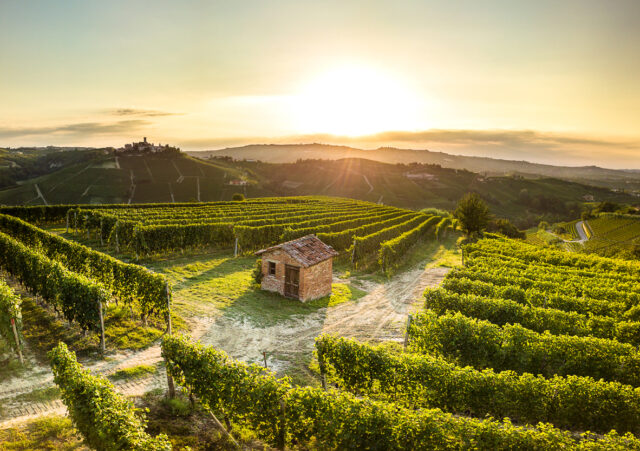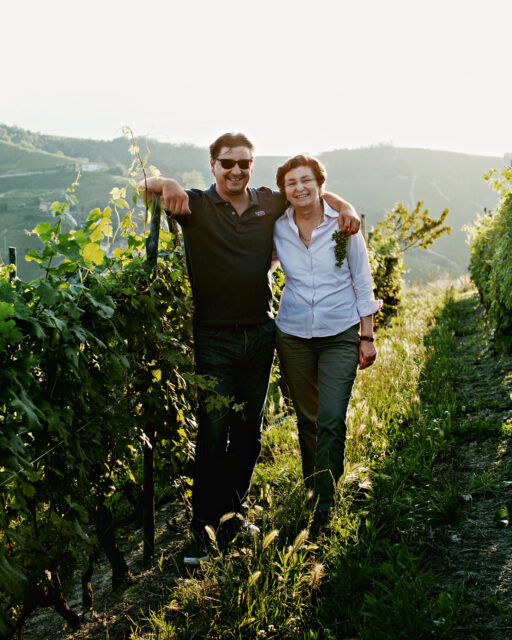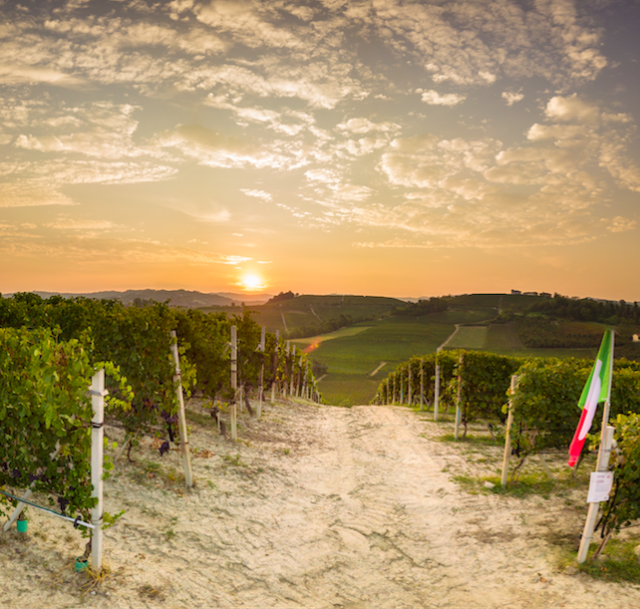This website uses cookies so that we can provide you with the best user experience possible. Cookie information is stored in your browser and performs functions such as recognising you when you return to our website and helping our team to understand which sections of the website you find most interesting and useful.
db meets: Davide Rosso of Giovanni Rosso
Giovanni Rosso is a small, family-owned estate in Barolo. The Rosso family has been growing grapes in Serralunga d’Alba since the 1890s, but only started bottling wine in the late 1990s. Giovanni’s son Davide took over winemaking duties in the early 2000s, after stints at Grivot and Denis Mortet in Burgundy. He has since gained a reputation as one of the region’s top Nebbiolo producers. Employing organic practices in the vineyard, his wines are made using a mixture of stainless steel, cement and French oak botti from the Fontainebleau forest, with those hailing from the Vigna Rionda vineyard among the most sought-after.

Being a relatively new player in Barolo did it take a while to gain the respect of your peers?
Barolo has a long history, so it’s important to be respectful of the old wineries, as they have opened the doors for the wines from our region around the world. I started 25 years ago and am part of the latest chapter of the region’s history. If you work well in the vineyard, winery and market you gain people’s respect.
Do you take a traditional or innovative approach to winemaking?
I started making wine in the 1990s, which was the moment for modern Barolo. I don’t want my wines to be too oaky, so I started using softer fermentation methods and I age my wine in large barrels. I was lucky – I had the chance to see the new and old producers – I think it’s important to take the best from both.

The big differences don’t exist so much between traditional and modern Barolos, the modernists are more traditional than they used to be, with shorter fermentations and less use of 100% new oak. And the traditional producers are modernising their methods. Barolo has come of age.
Are your Barolos made in an approachable style?
Barolo needs balance. If you give the wines time in bottle they gain in complexity. Today it’s easier to find Barolos that have perfect phenolic maturation and are less tannic than the older styles. The work in the vineyard has improved. We haven’t used chemicals on our vines for over 20 years. I was one of the first in the region not to do it.
Our savoire faire in the vinificaiton process has improved and our tannins are silkier as a result. My wines are immediately approachable, but they go to another dimension when they have been aged for 10-15 years. Modern consumers want to drink wines straight away. The wines I make need to be approachable early on so that they can be served in restaurants.
Why is practicing organic farming important to you?
We’ve worked in a natural way for 20 years. We’re not certified organic, as we use small amounts of copper on our vines. We get a lot of rain and humidity here as we’re close to the Alps. Context is important when it comes to organic viticulture. We use organic certified products. I remember when I was a boy and I was helping to drive the tractor and we sprayed a product on the vines that made me sick as it was so toxic – the evolution has been enormous.
Do you think top Barolos are undervalued in the investment market?
Yes, for sure, Barolo is not very expensive today. There is room to improve the price. Barolo is a very old DOC with a long history, it’s a luxury product, and the area is tiny. With the different cru the wines have fantastic investment potential for collectors as they are made in very small quantities, so they have the rarity factor. The 2016 Barolo vintage was exceptional, so I think the prices will go up to reflect that. I sell my top wines en primeur with Berry Bros & Rudd. It’s a fantastic moment for investing in Barolo wines and taking a chance on lesser-known crus.

How is the 2020 vintage looking in Piedmont?
2020 vintage was a very good, very classical, super balanced vintage. I had a bottle of the Arneis a few weeks ago and it was showing good balance and fruit, good structure and good acidity. In general it’s a vintage that everybody was very happy with – in Barolo and Barbaresco, and in Sicily too.
How have you adapted your business since the pandemic?
We haven’t shifted to direct to consumer sales, but my importers sell my wines online. We’ve sold a lot through the Swedish and Canadian monopolies in the last year, and via online sales in the UK and US and in the high-end Italian off-trade. It’s important to take a multi-channel approach these days – our 2020 turnover was up 18% on 2019.
What are your key goals for 2021?
This year is complex as the world is still closed. People are tired of this situation, as there aren’t so many occasions to open a good bottle. Barolo is a wine for restaurants. The Cipiani group was planning on selling 40,000 bottles of my Barolo by the glass last year, but it didn’t happen due to the pandemic. When London restaurants re-open it will be easy to get my wines into them. I don’t think they will reopen in a big way in the US until June.
Have the recent Etna eruptions affected your Sicilian vineyards?
Luckily we haven’t been affected by the eruptions as it’s the highest volcano in Europe and the summit is very far from the vineyards. We’re at the north face. We have six hectares of organic vines in Etna – it’s a lot easier to be organic there as we’re close to the sea. We started restoring the vineyards this year. I love working there, as it’s like having a new family, and the Sicilian people are very warm. We have five hectares of Nerello Masacalese and 1ha of Carricante.
The wines are sold via BBR and Bibendum in the UK and are doing really well. They’re also popular in the US, Japan and Australia. The interest in Enta wines has exploded over the last decade. People love their freshness and they’re very trendy now. We export the wines to 50 countries.

